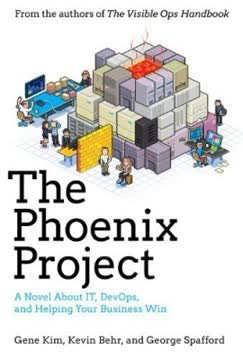Key Takeaways
1. Supply Chain Management: Balancing Responsiveness and Efficiency
"The goal or mission of supply chain management can be defined using Eli Goldratt's words as 'Increase throughput while simultaneously reducing both inventory and operating expense.'"
Defining supply chain management. Supply chain management involves coordinating the activities of companies involved in producing and delivering a product to market. It aims to balance responsiveness to customer demands with operational efficiency. This balance is crucial because different markets require different levels of responsiveness and efficiency.
Key components of supply chains:
- Producers (manufacturers)
- Distributors (wholesalers)
- Retailers
- Customers
- Service providers (logistics, finance, marketing, IT)
The challenge lies in aligning the supply chain with business strategy. Companies must understand their markets, define their strengths, and develop supply chain capabilities that support their role in serving those markets.
2. The Five Drivers of Supply Chain Performance
"The things a company can do and the ways that it can compete in its markets are all very much dependent on the effectiveness of its supply chain."
Five key drivers. Supply chain performance is determined by five main drivers: production, inventory, location, transportation, and information. Each driver can be managed to emphasize either responsiveness or efficiency, depending on the business requirements.
Breakdown of the five drivers:
- Production: Capacity and flexibility of manufacturing
- Inventory: Quantity and location of stock
- Location: Proximity to suppliers and customers
- Transportation: Speed and cost of moving products
- Information: Data accuracy and timeliness for decision-making
Companies must find the right balance among these drivers to create a supply chain that best serves their target markets while aligning with their overall business strategy.
3. Plan, Source, Make, Deliver: Core Supply Chain Operations
"The nuts‐and‐bolts operations at the core of every supply chain."
Four main categories. Supply chain operations can be grouped into four main categories: Plan, Source, Make, and Deliver. These categories encompass the essential activities required to manage the flow of products from suppliers to customers.
Key operations in each category:
- Plan: Demand forecasting, product pricing, inventory management
- Source: Procurement, credit and collections
- Make: Product design, production scheduling, facility management
- Deliver: Order management, delivery scheduling, return processing
Continuous improvement in these operations is necessary to deliver the efficiency and responsiveness required by evolving supply chains. Companies must focus on optimizing these core operations to remain competitive in their markets.
4. Technology's Impact on Supply Chain Management
"Information technology is merging with traditional technologies used to run supply chains."
Technological revolution. New technologies are dramatically changing how supply chains operate. The integration of information technology with traditional supply chain processes is enabling unprecedented levels of efficiency and responsiveness.
Key technological advancements:
- Cloud computing
- Internet of Things (IoT) and big data
- Artificial Intelligence (AI) and machine learning
- Industrial robots and automation
- Real-time product information systems
- 3D printing and additive manufacturing
- Simulation modeling
These technologies allow companies to collect and analyze vast amounts of data, automate routine tasks, and make more informed decisions. The challenge lies in effectively implementing and leveraging these technologies to create competitive advantages in supply chain management.
5. Metrics for Measuring Supply Chain Performance
"The highest profits go to the companies that can successfully respond to the opportunities their markets offer."
Performance categories. To effectively manage supply chains, companies must measure performance across four key categories: customer service, internal efficiency, demand flexibility, and product development. These categories align with different market types and their specific requirements.
Key performance metrics:
- Customer Service: Order fill rate, on-time delivery, product quality
- Internal Efficiency: Inventory turns, return on sales, cash-to-cash cycle time
- Demand Flexibility: Upside flexibility, outside flexibility, activity cycle time
- Product Development: New product introduction rate, time-to-market
Collecting and analyzing data across these categories allows companies to identify areas for improvement and align their supply chain capabilities with market demands. Effective use of performance metrics enables companies to continuously adapt and optimize their supply chain operations.
6. Collaboration and Coordination in Supply Chains
"To facilitate the coordination that is needed in supply chains, an industry group known as the Voluntary Interindustry Commerce Standards (VICS) has set up a committee to investigate collaborative planning, forecasting, and replenishment issues (CPFR)."
Importance of collaboration. In today's complex and rapidly changing business environment, effective collaboration among supply chain partners is crucial for success. Collaborative practices such as CPFR (Collaborative Planning, Forecasting, and Replenishment) and S&OP (Sales and Operations Planning) enable companies to better coordinate their activities and respond to market changes.
Key elements of supply chain collaboration:
- Sharing of demand forecasts and inventory data
- Joint business planning
- Coordinated decision-making
- Real-time information exchange
- Aligned performance incentives
By fostering collaboration, companies can reduce the bullwhip effect, improve forecast accuracy, optimize inventory levels, and enhance overall supply chain performance. This collaborative approach is becoming increasingly important as supply chains become more complex and global.
7. Creating Supply Chains for Competitive Advantage
"Companies that can create collaborative supply chains will have a significant competitive advantage."
Strategic supply chain design. Creating supply chains that provide competitive advantage requires a strategic approach. Companies must align their supply chain capabilities with their overall business strategy and market requirements.
Key steps in creating competitive supply chains:
- Identify business opportunities and define clear goals
- Assess current supply chain capabilities
- Design a supply chain strategy that leverages strengths and addresses weaknesses
- Implement improvements in key business operations
- Measure performance and continuously adapt
Successful companies use their supply chain capabilities as a key differentiator. This may involve developing customized supply chain services, forming strategic alliances with suppliers and customers, or leveraging technology to create unique value propositions. The ultimate goal is to create a supply chain that enables the company to deliver superior value to its target customers while maintaining profitability.
Last updated:
FAQ
What's Essentials of Supply Chain Management by Michael H. Hugos about?
- Comprehensive Framework: The book provides a detailed framework for understanding supply chain theory, operations, and opportunities, aligning them with business strategies.
- Practical Insights: It offers practical guidance on leveraging new technologies and best practices to enhance supply chain performance, emphasizing collaboration and real-time data.
- Real-World Case Studies: Includes case studies illustrating supply chain challenges and solutions, making it applicable for professionals seeking to improve operations.
Why should I read Essentials of Supply Chain Management by Michael H. Hugos?
- For Professionals: Designed for business, technical, and professional individuals who want to quickly grasp supply chain management essentials, especially those with new responsibilities.
- Competitive Advantage: Understanding supply chain management is crucial for gaining a competitive edge in today’s market, with insights on aligning supply chains with business strategies.
- Clear Presentation: Michael Hugos presents complex concepts clearly and concisely, making it accessible for readers at all expertise levels.
What are the key takeaways of Essentials of Supply Chain Management by Michael H. Hugos?
- Five Supply Chain Drivers: Identifies production, inventory, location, transportation, and information as key drivers of supply chain performance.
- Collaboration Importance: Emphasizes collaboration among supply chain participants to improve efficiency and responsiveness, highlighting CPFR as a critical practice.
- Performance Metrics: Outlines metrics for measuring supply chain performance, including customer service, internal efficiency, demand flexibility, and product development.
How does Essentials of Supply Chain Management by Michael H. Hugos define supply chain management?
- Systemic Coordination: Defined as the systemic, strategic coordination of traditional business functions and tactics across businesses within the supply chain.
- Performance Focus: Aims to improve long-term performance of individual companies and the supply chain as a whole, balancing efficiency and responsiveness.
- Function Integration: Integrates logistics, marketing, finance, and customer service to create a cohesive operational strategy.
What is the Bullwhip Effect in Essentials of Supply Chain Management by Michael H. Hugos?
- Definition: Refers to small demand fluctuations at the retail level causing larger fluctuations at wholesale, distributor, manufacturer, and supplier levels.
- Impact: Leads to inefficiencies, excess inventory, and increased costs throughout the supply chain.
- Mitigation Strategies: Discusses strategies like improving demand forecasting accuracy and enhancing communication across the supply chain.
What role does technology play in supply chain management according to Essentials of Supply Chain Management by Michael H. Hugos?
- Operational Transformation: New technologies transform supply chain operations, enabling greater efficiency and responsiveness with tools like cloud computing, IoT, and AI.
- Automation and Robotics: Discusses automation and robotics in factories and warehouses, streamlining processes and reducing labor costs.
- Data-Driven Decisions: Technology facilitates data collection and analysis, essential for informed decision-making and quick market response.
How does Essentials of Supply Chain Management by Michael H. Hugos suggest measuring supply chain performance?
- Four Performance Categories: Outlines customer service, internal efficiency, demand flexibility, and product development as key performance categories.
- Customer Service Metrics: Metrics like order fill rates and on-time delivery rates assess how well a supply chain meets customer expectations.
- Internal Efficiency Metrics: Emphasizes measuring internal efficiency to ensure profitability, tracking costs associated with production, inventory, and logistics.
What is the significance of collaboration in supply chain management according to Essentials of Supply Chain Management by Michael H. Hugos?
- Enhanced Efficiency: Collaboration among supply chain partners leads to improved efficiency and reduced costs.
- Shared Information: Relies on sharing information across the supply chain, fostering trust and cooperation among partners.
- Competitive Advantage: Successful collaboration can provide a significant competitive advantage, with examples of improved performance.
What are some challenges in supply chain management discussed in Essentials of Supply Chain Management by Michael H. Hugos?
- Supply Chain Complexity: Highlights increasing complexity due to globalization and technological advancements, managing multiple tiers of suppliers and service providers.
- Demand Uncertainty: Fluctuations in customer demand create uncertainty, requiring effective management strategies.
- Technology Integration: Discusses challenges of integrating new systems with existing operations, emphasizing careful planning and execution.
What are the best quotes from Essentials of Supply Chain Management by Michael H. Hugos and what do they mean?
- Inventory Management: "The only time a company would want to let inventory exceed sales is in a growth market," highlighting inventory alignment with market demand.
- Agility and Adaptability: "Supply chains need to focus on responding to constant change," emphasizing the need for agile and adaptable supply chains.
- Holistic Metrics: "Measuring operational metrics in isolation can be counterproductive," stressing the integration of operational and financial metrics for informed decisions.
How does Essentials of Supply Chain Management by Michael H. Hugos define demand flexibility?
- Market Responsiveness: Refers to a company's ability to quickly adapt to changes in customer demand, essential for maintaining satisfaction and competitive advantage.
- Upside and Outside Flexibility: Distinguishes between increasing production for higher demand and offering additional products outside the usual range.
- Flexibility Measurement: Metrics like activity cycle time and percentage increase in order volume assess a company's response to demand fluctuations.
How can companies improve their customer service capabilities as suggested in Essentials of Supply Chain Management by Michael H. Hugos?
- Implementing CPFR: Collaborative Planning, Forecasting, and Replenishment practices enhance communication and coordination with customers.
- Real-Time Data Sharing: Providing real-time data access improves service levels, building trust and enhancing satisfaction.
- Tailored Solutions: Focus on delivering customized solutions to meet specific customer needs, differentiating from competitors and fostering long-term relationships.
Review Summary
Essentials of Supply Chain Management receives mostly positive reviews, with readers praising its comprehensive coverage of supply chain basics and practical insights. Reviewers appreciate the book's logical structure, detailed overview of key concepts, and real-world case studies. Many find it valuable for beginners and students entering the field. Some readers highlight its usefulness in understanding e-commerce and business analysis. While most reviews are enthusiastic, a few find the content basic or dated. Overall, readers consider it an informative and well-written introduction to supply chain management.
Similar Books







Download PDF
Download EPUB
.epub digital book format is ideal for reading ebooks on phones, tablets, and e-readers.




